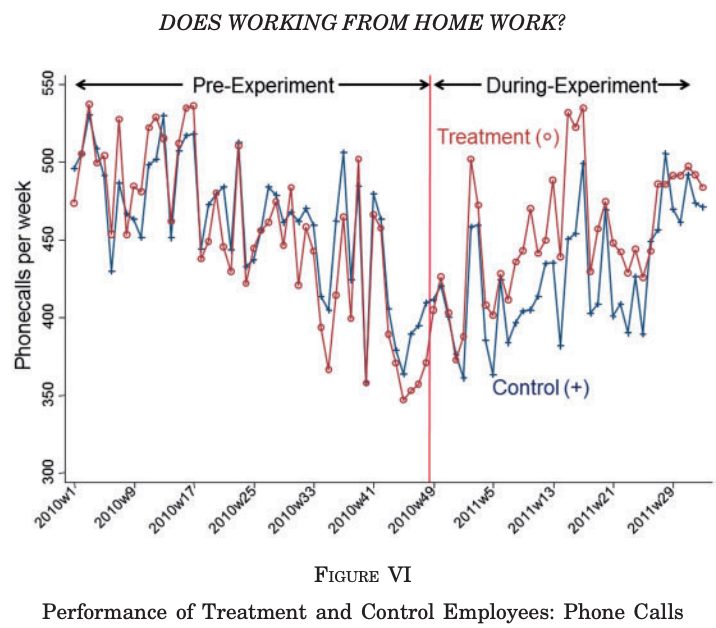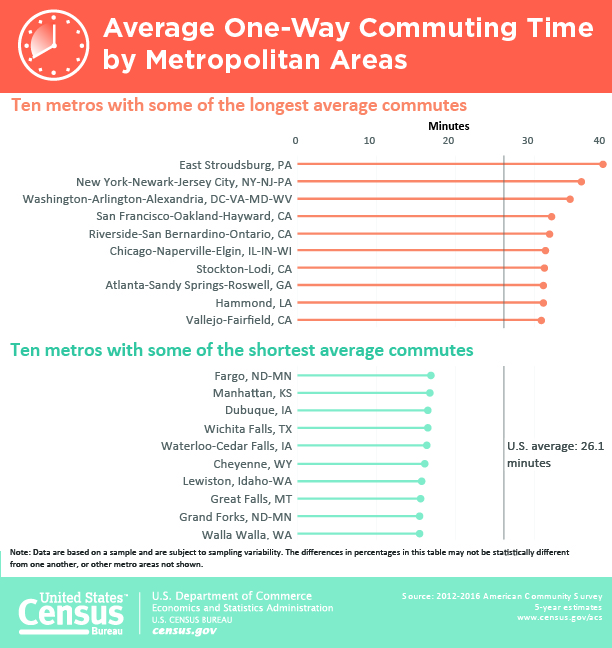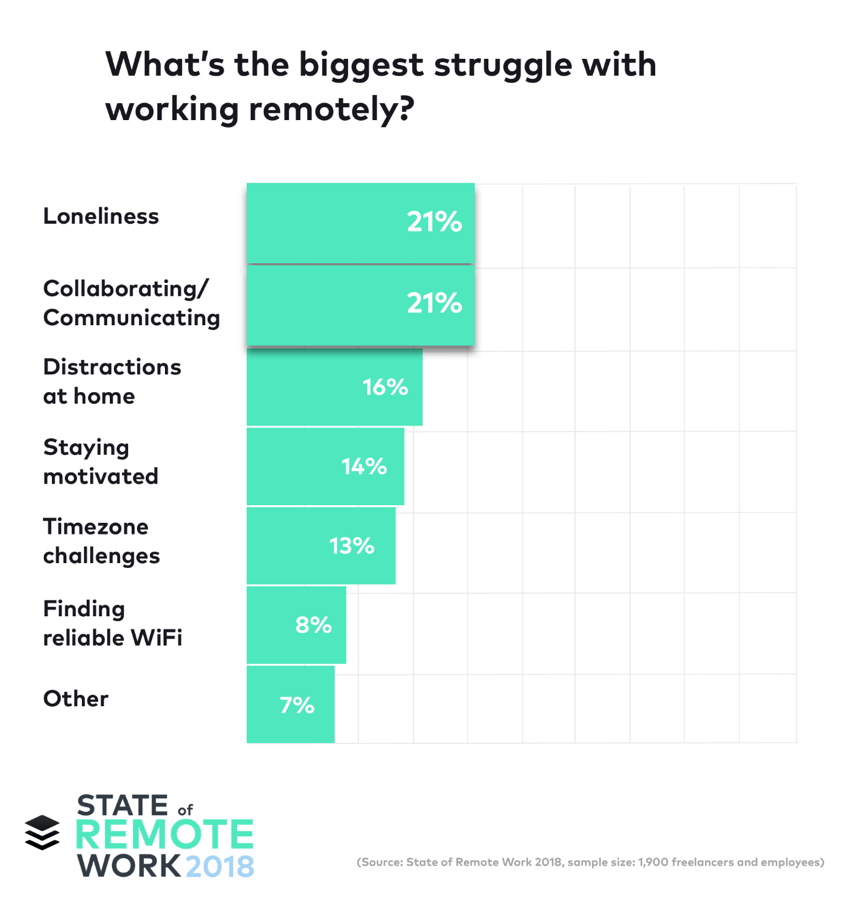What Is Remote Work?
Remote work (a.k.a., telecommuting or flex work) is a workforce management style that allows professionals to work outside of a traditional office environment, often from home. It is based on the concept that work does not need to be done in a specific place to be executed successfully. Instead of commuting to an office each day to work from a designated desk, remote employees can execute their projects and surpass their goals wherever they please.
Remote workers have the flexibility to design their days so that their professional and personal lives can be experienced to their fullest potential and coexist peacefully. There has been a cultural paradigm shift in what society deems to be an appropriate workplace—and remote work has capitalized off of that newfound freedom.Remote work does not need to be an all or nothing program. Although some employees may always work remotely, certain ones may be partially remote, working away from the office on some days.
Considerations For Remote Work
Pros
For Employers
Cost Savings
Companies can save an average of $11,000 annually for each remote employee because they require less infrastructure and resources. These savings come in the form of lower expenses on furniture, office space, telecommunications, and onsite benefits (e.g., snacks, special events, etc.).
Recruitment/Retention
Having the ability to work from home allows employers to attract talent from a wider range of candidates as well as retain valuable existing employees as their life circumstances evolve. This includes talented employees from geographically distant areas as well as those with a disability or inability to commute to the office.
The value of this benefit is evidenced by seven out of 10 remote workers saying they would not move to another company for higher pay, compared to six out of 10 employees who work onsite. Although this may seem like a small difference, the cost savings from lower recruitment and retaining expenses adds up quickly.
Job Satisfaction
Telecommuters are more likely than office workers to report their jobs as more pleasurable and stimulating. They were also significantly more enthusiastic about their jobs. Higher job satisfaction produces a number of benefits, including higher retention and productivity.
Productivity
Studies continue to show the impact flex and remote work has on productivity. A recent Harvard Business Review study of U.S. Patent and Trade Office workers found their output increased by 4.4% after a transition to remote work. There were also no significant increase in having to rewrite patents due to appeals.
A Stanford study of a 16,000-employee Chinese travel agency found that remote work increased employee satisfaction and helped halve the agency’s previous employee attrition rates. In the same study, remote call center employees were 13% more productive.

For Employees
Flexibility
Remote employees have the flexibility to work from where they choose. This affords them the opportunity to be close to family or loved ones, move to a location with a lower cost of living, or not have to relocate for their job. Although not always the case, some companies also offer opportunities where employees can combine remote work with flexible schedules that do not require them to be online during certain hours. This allows employees to work schedules that are best suited for their life.Flexibility of location and time reduces stress, helps achieve better work-life balance, and increases productivity. For example, remote work saves an average employee 26.1 minutes in commuting each way. This totals to 4.5 extra hours a week (or a full day every two weeks).

Job Satisfaction
Employees want careers that are professionally satisfying, and remote work helps them realize this goal. The flexibility afforded by remote work lowers the burden that office-based employment often creates (e.g., inability to live where one wants), allowing for employees’ careers to co-exist in harmony with their personal lives.
Cons
For Employers
Coordination
With a geographically dispersed workforce potentially across multiple time zones, coordinating schedules amongst team members can be challenging. This can result in lost productivity that partially offsets the productivity gains from remote work. It is important to note that well-designed and executed studies that measure productivity changes from remote work measure the net gains and losses in productivity and account for challenges such as coordinating schedules.
Culture
Employers find it harder to support a workplace culture with employees who telecommute. Fortunately, there are ways to build a community with remote employees.
For Employees

Loneliness
The workplace has traditionally been a common location for meeting and developing friendships that extend beyond job interactions. Not having these interactions is why employees view loneliness as the biggest struggle of working remotely.
Communication
Not having the ability to meet face-to-face creates challenges for optimal communications. For example, remote employees do not get the benefit of reading body cues in conversations.
Distractions
Although one of the benefits of remote work is the ability to more easily address personal matters, these tasks can often become a distraction and adversely impact work performance.
Balance
Remote work improves work-life balance in many ways, but it also can make it difficult to unplug from work. Flexible work schedules blur the line between personal time and work time, which is why remote employees are more likely to work longer hours. Nearly 40% of telecommuters say they often work extra time to get the job done, compared with 24% of office employees.
Myths About Remote Work
It’s For Everyone
Not long ago, the belief was that the autonomy provided from flexible work arrangements were universally beneficial for employee well-being. However, research found that some employees are much better suited for this type of work. The need for autonomy varies amongst employees and is strongly correlated with their perceived level of emotional stability. This suggests that remote work may not be beneficial for all employees. As such, employers should consider certain factors when hiring remote employees. The study concluded that employees who report a high level of autonomy in conjunction with a high level of emotional stability are more resilient to strain and tend to be successful in remote work settings. On the other hand, employees who report a high level of autonomy paired with a low level of emotional stability are notably more susceptible to stress. They are less likely to thrive in remote work settings.Additionally, not all types of jobs are suitable for remote work. While customer service representatives might be able to work on their laptops from anywhere, the same cannot be said for many people working in the health care sector. These jobs require employees to be on-site and are not a good fit for remote work.
Remote Employees Have Trouble Communicating
While it is much easier to communicate in person, there is a myriad of apps and tools to facilitate effective communication for remote employees. Many of these tools did not exist in cost-effective ways until recently. Employers who previously chose not to support remote work because of technology and other costs may want to reconsider their position. In order for remote employees to communicate successfully, they will need more than just the right tools. They may also need proper training, which includes education on the cultural norms within a company, ways to “over-communicate” or be very detailed, and ways to pick up social cues digitally.
Remote Employees Are “Always On”
This is a concern for both employers and employees alike, but it shouldn’t be the case. Just like office employees, remote employees should establish their work hours, or work on creating a schedule with their managers. This should then be clearly communicated to relevant stakeholders. Many of the technologies that facilitate better telecommuting also include “sleep” modes to prevent managers and colleagues from assuming remote workers are available.
Remote Employees Underperform
Surveys show that remote workers can be more productive than office employees. Specifically, 77% of remote employees report greater productivity while working offsite with 30% accomplishing more in less time and 24% accomplishing more in the same amount of time.
Creating A Successful Remote Work Environment
Despite the overwhelming research supporting the benefits of remote work, many employers choose not to embrace it. Some employers (e.g., Bank of New York Mellon, IBM, Yahoo, Aetna, and Best Buy) have gone as far as reducing the number of remote workers they employ. The reason some groups do not have remote workers or have chosen to curtail this workforce management style is often that they lack the infrastructure to support a successful remote work environment.Employers cannot simply offer remote work as an option and expect it to succeed. As is the case in most aspects of business success, preparation is key to success.
Provide Tools
From video conferencing to chat applications, there are a number of affordable tools that employers can adopt that will facilitate one of the biggest challenges of remote work—communication. Before hiring remote employees, companies should have the technology infrastructure in place for them to be successful.
Create Meetups
In-person interactions are and always will be valuable. Remote employees should be offered opportunities to meet up with office employees and their teams periodically to foster the relationships that will allow them to thrive when they are working remotely.
Train Properly
Being able to successfully manage work-life balance, communicate effectively, and complete other tasks often requires different skills for remote employees than office ones. Employers should train remote employees accordingly to ensure they have the skills to be successful in their work environment. Managers of remote employees also need to be trained to be effective in their supervisory roles. This is especially true if they do not have experience with remote employees.
Hire For Success
Not all employees are suited for remote work. This means that hiring for remote positions should take into consideration the degree of autonomy and emotional stability applicants possess. This is especially important when considering the costs associated with hiring and retaining talent.
Apply Parity
No matter how large or small a company’s remote workforce is, it is critical that remote employees are not seen as separate from or treated differently than office employees. If remote workers feel that their status with an organization is different than office employees, they will not be fully committed to the vision of the organization. This can be addressed by having senior leadership explicitly (through words and actions) show their support for remote work.Additionally, companies should also demonstrate parity between these two types of employees by making sure remote employees have access or alternatives to key benefits.
Start Small
There is no reason for employers to rush into offering remote work arrangements. First, organizations should set up the infrastructure for success as well as finding and training the right candidates. Then, they can slowly start to roll out the arrangement with a select group of employees. As the employees, managers, and companies learn from the initial experience, they can take those lessons and apply them more broadly as the program grows to incorporate more workers.
Employee Wellness For Remote Employees
The benefits of a healthy workforce extend to remote employees, so companies would be wise to make sure their wellness benefits include options for remote workers. A wellness program comprised primarily of onsite resources would not be made available to remote employees. This does not mean that employers should only offer programs that can be used equally by remote and office employees. Employers can provide alternative benefits for remote employees that are comparable to the ones they cannot access. For example, office employees may have access to an onsite gym, but as an alternative, companies can allow remote employees to get reimbursed for part of their personal gym membership.Wellable offers an Employee Wellness Program Builder that helps companies determine which wellness benefits make the most sense for them based on a few simple questions, one of which is about the size of their remote workforce. Take the quick quiz and get recommendations on how to best serve the employee health needs of remote and office employees.
This article was last updated on October 12, 2022












